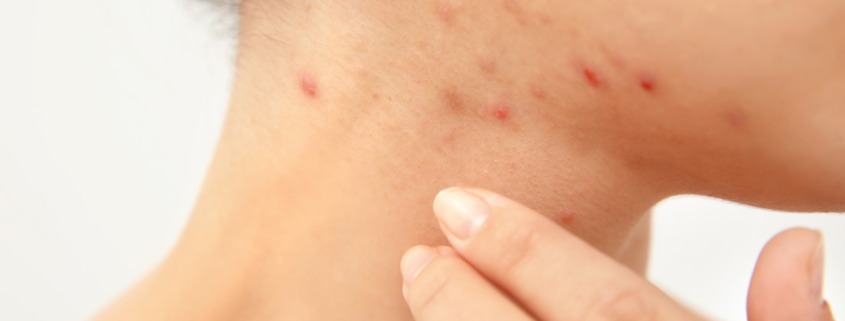Acne is considered one of the most common diseases in the US and can affect anyone from infant to adult. Acne is a skin condition caused by hair follicles becoming blocked with oil and dead skin cells. If not treated properly, acne can leave permanent scars and dark spots which can result in low self-esteem.
Inflammation occurs from the presence of specific bacteria in the skin. The bacteria mixes with the oil and dead skin and can cause mild redness, clogged pores, deep lesions and cysts.
Symptoms:
- Whiteheads: clogged plugged pores
- Blackheads: open plugged pores
- Papules: Small red, tender bumps
- Pustules: Pimples
- Nodules: Large, solid, painful lumps under the skin
- Cystic Lesions: Painful, pus-filled lumps under the skin
Acne can be caused by increased production of sebum (oil), oil and dead skin clogging hair follicles, bacteria, and inflammation. Acne is known to appear on the face, forehead, chest, upper back, and shoulders. These areas have more sebaceous (oil) glands. Hormonal changes, certain medication, diet, and stress can all trigger or worsen acne.
Treatment for acne can include oral medication, topical medications, or light therapy. Here at Advantage Healthcare, we use the power of both red and violet cold low-level lasers to treat acne. Low Level Laser Therapy (LLLT) is an alternative to all other therapies and is known to have less side effects compared to other treatment options and is pain free. Violet (blue) lasers cause a photochemical reaction and forms reactive free radicals and oxygen which in turn leads to bacterial destruction. Red light lasers are known to penetrate deeper in tissues when compared to violet light. Red light can affect the sebum secretion of sebaceous glands and reduce inflammation. The combination of red and violet (blue) light has a synergistic effect in acne treatment. The effectiveness of the combined light therapy is due to the synergy between the anti-bacterial and anti-inflammatory effect of the red and violet light respectively.
(Source: https://www.ncbi.nlm.nih.gov/pmc/articles/PMC4126803/)




